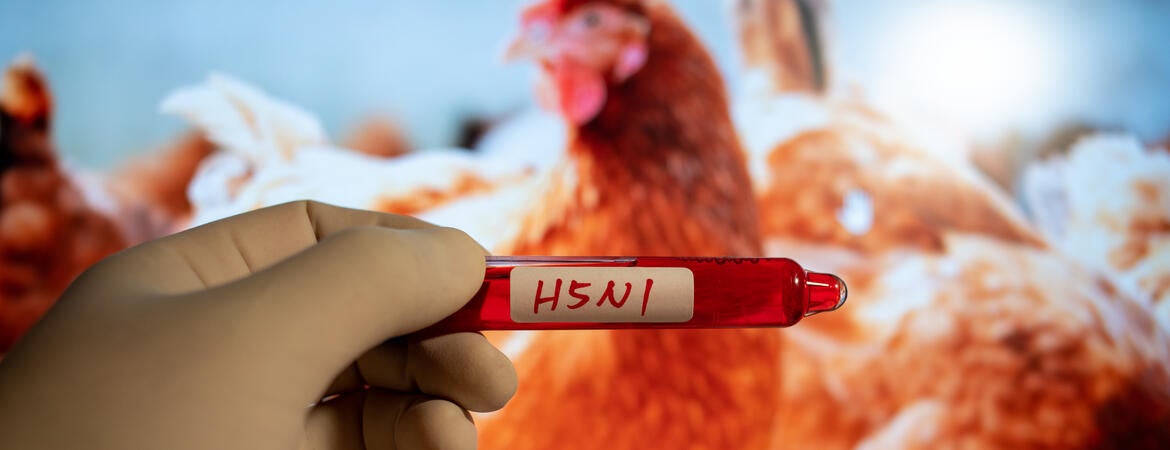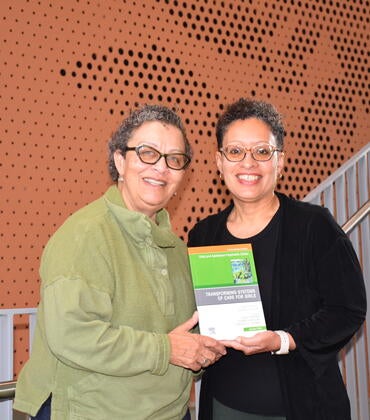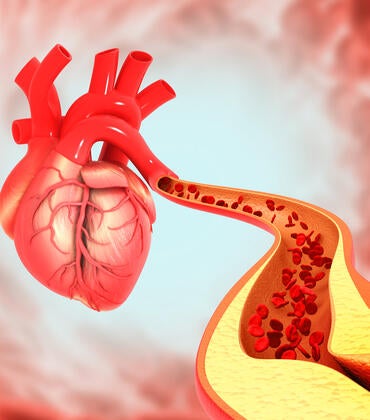
Bird flu virus has been found in milk from infected dairy cattle. The Food and Drug Administration, or FDA, is preparing in case the current strain of avian flu circulating in the U.S. jumps to humans on a large scale. The FDA conducted a survey of 297 milk products and found viral RNA from the H5N1 bird flu in about 20% of samples.
Is such milk safe to drink? Scott Pegan, a professor of biomedical sciences in the School of Medicine at the University of California, Riverside, answers a few pressing questions about H5N1 bird flu virus showing up in milk.
An expert on emerging and persistent viruses, Pegan has partnered for several years with industry and federal agencies on research for drug discoveries and is a requested panelist and speaker at numerous forums on drug discovery, viruses, and structural biology.
Q: Based on the FDA’s notice of 1 in 5 commercial milk samples containing fragments of the bird flu virus, does drinking milk present any risk to consumers?
The finding of 1 in 5 commercial milk samples containing fragments of the H5N1 avian flu does not currently pose any direct risks to consumers. In the U.S., commercial intrastate-sold milk is required to be pasteurized. This process is geared to kill viruses like H5N1 and bacteria that can pose a threat to human health. While killed, the remanent of viruses and bacteria in the milk do remain.
The indirect concern within the scientific and medical community is more around the increased risk of spillover to humans from animals serving as reservoirs for H5N1. Prior to the outbreak in dairy cattle, this concern principally revolved around risk of transmission to humans from wild birds or poultry. Typically, avian flu spillover infections outside of birds or poultry were observed principally in the upper respiratory track of mammals. The presence of H5N1 avian flu in the milk of these cattle shows that cattle may be able to provide a new reservoir for this virus increasing the odds of exposure to those in direct contact with the infected cattle. The more animals infected, the higher chance humans come in direct contact with the virus, which likely would lead to a greater number of human cases. The case of cattle to human transmission seen in Texas is in line with this concern. Also, the more mammals infected increases the chances the virus will adapt to other mammals, such as humans.
Q: Can the virus be spread through milk?
No, the virus cannot be spread through pasteurized milk and milk products. What is currently being reported is the detection of broken down H5N1 avian flu virus remnants, particularly the RNA of the virus. This is because the typical first line detection used for surveillance of viruses relies on the process of quantitative polymerase chain reaction (qPCR). This process only detects the presence of fragments from H5N1’s RNA genome, but not necessarily intact virus capable of infection. It’s akin to detecting the presence of a car engine, or transmission. You know the engine came from a car, but don’t know if it came from a car capable of being a moving vehicle. Additional tests such as culturing the virus are then used to detect whether what is detected is an intact virus capable of infection.
The FDA and other research laboratories have been and are performing these additional tests. They have not reported any intact H5N1 avian flu virus in samples of commercial pasteurized milk so far and are unlikely given the pasteurization standards within the U.S.
Q: To be safe, should we simply avoid drinking milk?
Milk that has been pasteurized is safe and there is no current reason to avoid it or other pasteurized milk products based on the FDA’s findings. However, there is a substantial risk of consuming unpasteurized milk and products of that milk. Over the past few years, there has been an increased consumer demand for these unpasteurized products. While not allowed to be sold via interstate brands, some states have relaxed local sale of these products at Farmers markets and similar outlets. Individuals may want to avoid those unpasteurized products until more information is obtained about this H5N1 avian flu outbreak in dairy cattle.
Q: What is the risk to cats that drink raw milk from bird flu-infected cows?
Cats have been previously reported to be susceptible to infection by various strains of Influenza A. The prevailing view has been that cats often contract these cases from close contact with human owners suffering from the flu. With humans not being a reservoir for the avian flu, feline cases of avian flu have historically been rare but present in several countries over the years — countries where the avian flu has become endemic. In laboratory settings and what has been observed in wild and domesticated cats, the avian flu has been found to cause pneumonia as well as internal tissue and neurological damage with fatal outcomes.
Avian flu transmission to cats occurs through the same means as other strains, direct contact, contaminated surfaces, and ingestion. Transmission by ingestion of infected wild birds or poultry has been particularly highlighted in several feline deaths — from domestic cats to large cats like tigers. The recent cattle outbreak in Texas also extended the risk of transmission through feline consumption of avian flu contaminated unpasteurized milk. Individuals should take care when coming into contact with animals consuming raw poultry and beef as well as milk that could be infected with avian flu virus.
Q: What is the risk to dairy workers? Are they at risk from bird flu?
As seen with several viruses capable of infecting multiple animals, close species-species proximity is a major factor in viruses spilling over to a new species. The avian flu outbreak in dairy cattle has created a new route for dairy workers to come into close contact with the virus. These workers should be on the lookout for infected animals and take measures to protect themselves from infection. These measures that were already implemented in several states prior to the outbreak aim to reduce risk of infection. These include use of N-95 masks, rubber boots, as well as certain types of coveralls, goggles, and hair covers that prevent individuals coming into contact with infected fluids.
Header image credit: JUN LI/iStock/Getty Images Plus.




